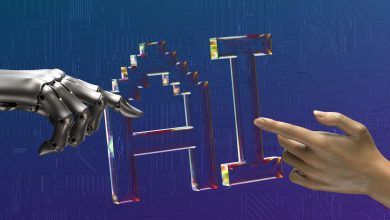
The issue of false positives and the resulting alert fatigue when using a Managed Detection and Response (MDR) system poses a significant challenge for cyber security teams.
Many of these detection systems generate a huge and overwhelming volume of alerts as they operate to protect organisations from advanced threats. However, the majority of these alerts are likely to be false alarms.
As a result, analysts spend a lot of time investigating notifications that prove to be irrelevant, meanwhile, the risk of genuine threats risks going unnoticed due to desensitisation caused by the sheer volume of alerts gets high.
This overload of false positives and the time spent investigating them creates vulnerabilities. However, AI is transforming MDR technologies, improving their efficiency and reliability while reducing the volume of alerts and ensuring proper protection.
Advanced Algorithms for Real-Time Data Analysis
One of AI’s most impactful contributions is its ability to analyse vast amounts of data in real time. Machine learning (ML) models are designed to identify complex patterns and correlations across diverse data sources, such as network traffic, endpoint activities, and cloud environments.
Unlike static, rule-based systems that often flag routine activities as threats, AI adapts to these nuances with remarkable precision. For example, AI can distinguish between normal network spikes due to routine software updates and malicious traffic, thereby reducing unnecessary alerts.
Automating Alert Triage and Prioritisation
AI excels at automating the triage process, effectively assigning risk scores to alerts based on their context and severity.
By evaluating factors such as the origin of the threat, its potential impact, and the organisation’s baseline activities, AI can prioritise alerts that genuinely warrant attention. This automation allows security teams to immediately focus on critical incidents rather than being bogged down by low-risk or irrelevant notifications.
Behavioural analytics for contextual understanding
Incorporating behavioural analytics further enhances AI’s ability to reduce false positives. AI-driven MDR systems learn about the standard activity patterns within a specific organisation and are then able to flag any deviations from this pattern for investigation.
These anomalies range from irregular file access to unexpected login attempts. For example, AI can identify that an after-hours login from a remote location is routine for one user but is very suspicious for another. This level of contextual understanding helps to minimise the chances of legitimate activities being incorrectly flagged.
Continuous learning and adaptation
AI-powered MDR solutions continuously learn and evolve, reducing false positives, such as those from irregular logins by authorized personnel. By automating preliminary investigations and classification tasks, AI lightens the operational workload for security teams, enabling them to focus on more complex strategic work. What sets
AI-driven MDR apart is their ability to adapt quickly and improve over time. Unlike traditional solutions that rely on static rules, AI models learn from past incidents and adjust to the evolving threat landscape, ensuring security defences stay robust and up to date.
Despite its potential to transform MDR technology, AI does work best when used in collaboration with human expertise. Automation from AI needs to be viewed as a way to free security professionals from repetitive tasks, leaving the critical thinking and decision-making to the security teams.
It is this that makes human intervention irreplaceable. It is also the collaboration between human intelligence and AI that will create a resilient defence strategy against evolving cyber threats.
Organisations need to embrace AI if they are to enhance the accuracy and efficiency of MDR solutions and alleviate the overwhelming burden of alert fatigue and false positives.
By using an MDR solution that integrates AI, businesses will not only strengthen their security posture but also empower their teams to focus on what truly matters – protecting against real and sophisticated threats.
The advantage of a unified cybersecurity platform scalable to the next level thanks to the integration of MDR on machine-learning- and AI-based platform.
This partnership between human security teams and advanced AI technology is the future of cybersecurity and MDR services.




